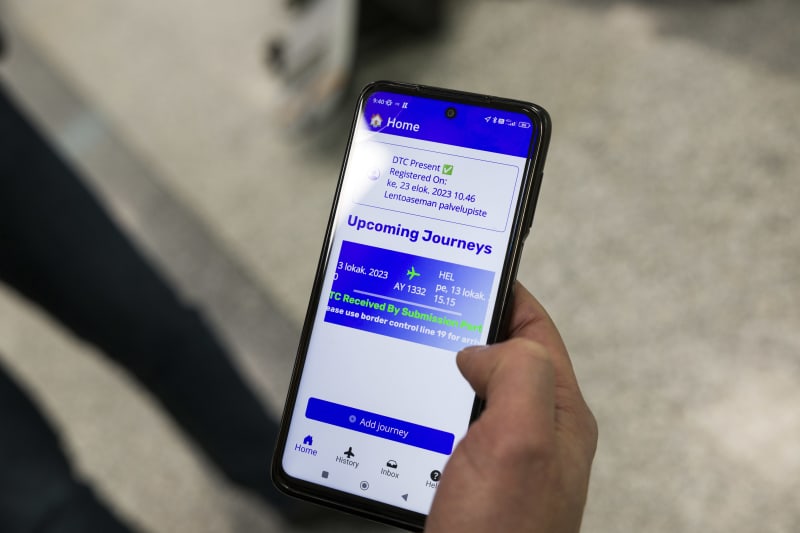The new digital travel document, the DTC, is three times faster than the old-fashioned passport check at airport borders.
Helsinki Airport has started a trial of the digital travel document, or DTC. The acronym DTC stands for Digital Travel Credentials.
The EU-funded pilot, which started in August-September, has so far carried out 90 border checks.
The target would be 500 inspections by the end of February. The trial will take place between Finland and the UK.
In practice, DTC is a digital version of a physical passport.
During the inspection, the passenger looks at the camera, and the system verifies that he is the right person. At the same time, the system reads the chip in the passenger’s physical passport.
– There are always technical challenges when piloting something for the first time in the world. There have been challenges, but everything has been resolved so far, he says.
According to Väisänen, they are connected to the phone application, which initially did not work on all phone models. There have also been problems with the transmission of flight information.
– There have been expected problems, which have since been resolved.

According to Väisänen, the new process increases safety.
For the customer, the new inspection method is seen as speeding up the inspection. The process is three times faster than a manual check: it takes about 10 seconds, while a traditional check takes about 30 seconds.
If you want to try the service, you have to go to the Tikkurila police station or the Helsinki-Vantaa permit service point to register. In addition, the passenger must download the DTC application on his phone.
The Finnish Immigration Service is following the experiment closely
The Finnish Immigration Service is also closely following the trial of the digital document, as a digital residence permit is under development.
– When investigating the possibility of digitizing the passport, it is essential and logical that the accompanying documents, such as visas and residence permits, should be in digital form, says Grefberg.
According to him, the digital residence permit should be like a barcode or QR code, which contains the name information and validity periods of the travel document. In addition, it is currently being determined whether a photo could be included as well.
– When there are possibly exceptional situations where it is necessary to grant a lot of residence permits in a short time, this would be convenient, says Grefberg.
He says that a digital residence permit would be safer than before, because if the document is lost, for example, a high-quality and larger face image binds the document more strongly to its user.
*You can discuss the topic on 14.10. until 11 p.m.*
